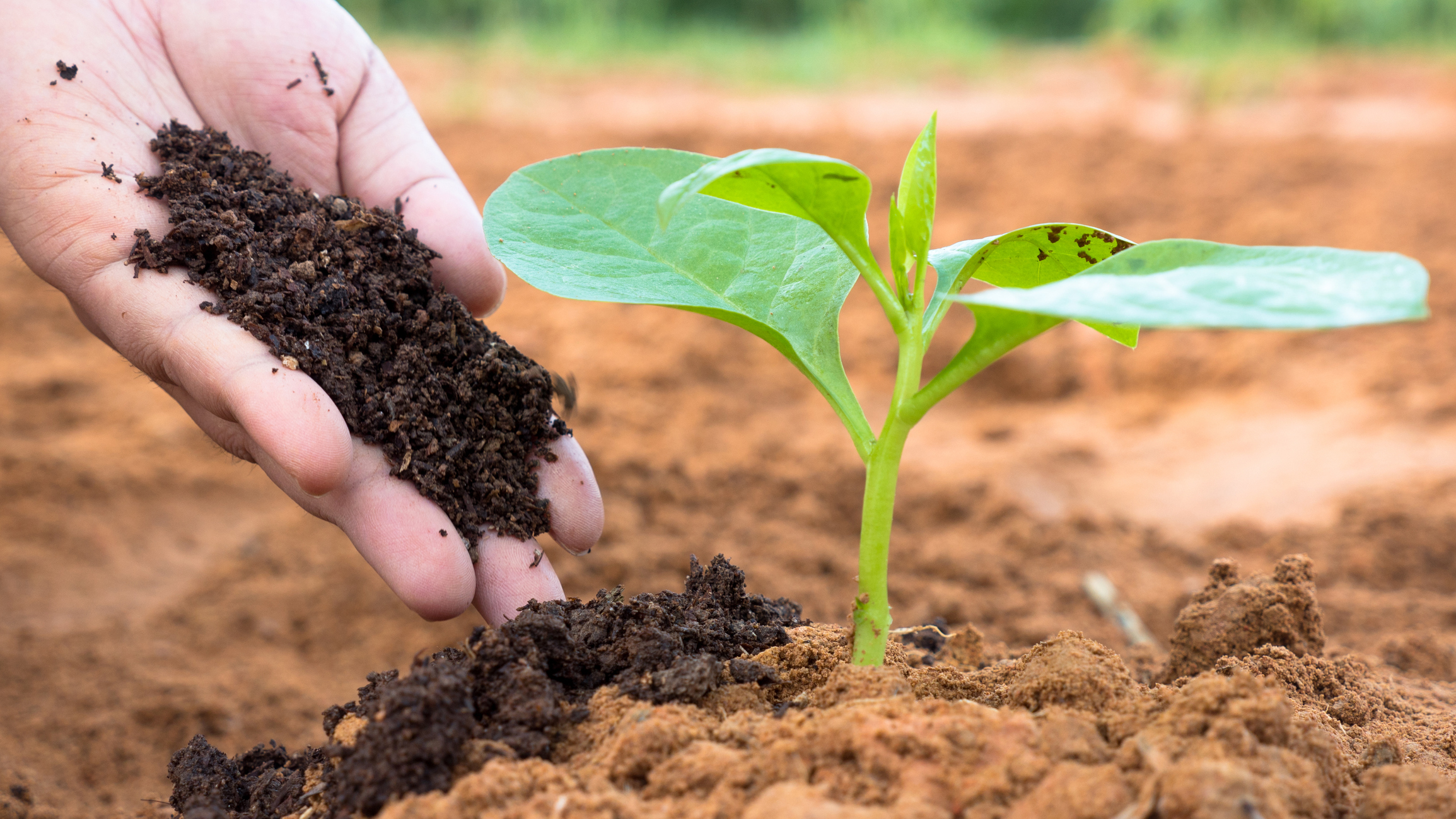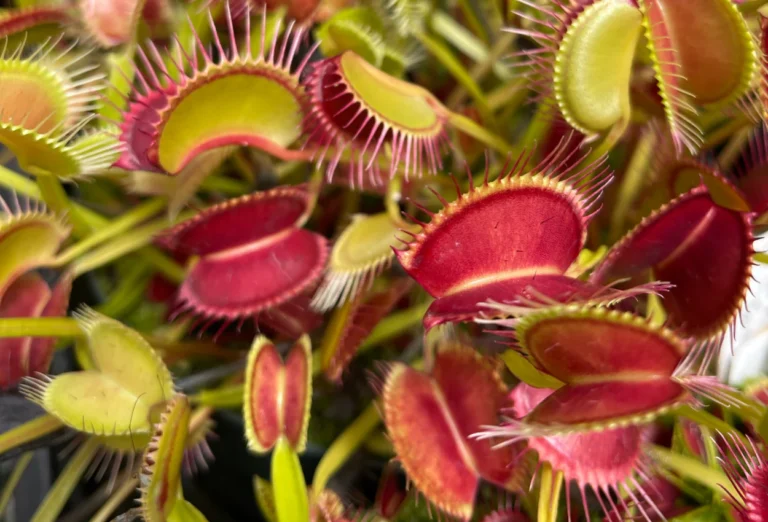Soil is the unsung hero of our planet, silently working to nourish the plants that in turn, nourish us. Its health and fertility are vital for a thriving garden. In this context, a little-known secret to boosting soil health lies in the humble earthworm.
Harnessing the power of these wriggling creatures can result in significant improvements in soil fertility. Earthworms are natural tillers and fertilizers, their tunneling habits aerate the soil and their waste, known as worm castings, enrich it with nutrients.
In the forthcoming discussion, we will delve into the myriad benefits of encouraging a healthy earthworm population in your soil. We will explore how they contribute to soil structure, nutrient availability, and overall plant health. Plus, we will reveal how you can foster their proliferation in your own garden.
Moreover, we will also touch upon the world of vermicomposting, an organic composting method that employs worms to break down kitchen and garden waste into rich, fertile compost. You’ll learn how to start and maintain your own worm composting bin, and how to use the resulting compost to supercharge your garden.
As we progress, it becomes clear that these humble garden dwellers hold immense potential for ecological improvement and sustainable agriculture. Ready to explore the world underfoot and learn how you can harness the power of worms for improved soil fertility? Let’s dive in!
Understanding the Power of Worms in Soil Fertility
Worms play a crucial role in soil health, acting as natural tillers and fertility enhancers. These small creatures possess an enormous capacity to transform and enrich the soil, making it more productive for plant growth. While they often go unnoticed beneath our feet, their impact is anything but minor. In fact, their constant burrowing, feeding, and digesting is a form of biological engineering that improves the very foundation of healthy ecosystems.
One of the most significant ways worms contribute to soil fertility is through their castings, or excrement, which are packed with essential nutrients readily available to plants. These castings are rich in nitrogen, phosphorus, potassium, and micronutrients, as well as beneficial enzymes and microbes that promote plant health. Unlike synthetic fertilizers, which can leach into the groundwater or damage soil microbiomes with prolonged use, worm castings work in harmony with the soil’s natural processes. They slowly release nutrients, improving not only short-term plant health but also the long-term resilience of the soil.
Additionally, worms serve as excellent soil aerators. As they burrow through the earth, they create channels that allow oxygen and water to move freely through the soil layers. This increased porosity encourages deeper root growth and better water infiltration, reducing surface runoff and erosion. It also creates a more hospitable environment for beneficial soil organisms like fungi and bacteria, which further aid in nutrient cycling and organic matter decomposition.
Worms also play a key role in breaking down organic material. They consume decaying plant matter, food scraps, and other organic debris, converting it into nutrient-rich humus. This natural recycling process helps reduce the amount of waste that would otherwise contribute to landfills and greenhouse gas emissions. For gardeners and farmers, this means less dependence on external inputs and a more self-sustaining soil ecosystem.
Beyond their direct impact on soil structure and nutrition, worms indirectly support plant health by fostering a more biologically diverse underground environment. Their presence encourages a balance of microorganisms and deters the buildup of harmful pathogens. Some studies suggest that plants grown in worm-rich soils exhibit increased resistance to pests and diseases, a benefit that further highlights the ecological harmony fostered by these humble invertebrates.
It’s also worth noting that earthworms are considered bioindicators of soil health. Their abundance, diversity, and activity levels can reveal a lot about the condition of the soil. Healthy soils tend to have vibrant worm populations, while degraded or polluted soils often show a decline in worm activity. This makes monitoring worms a simple and effective tool for evaluating and improving soil management practices.
Integrating worms into agricultural or gardening systems doesn’t necessarily require elaborate setups. Simply adding organic matter, reducing soil compaction, avoiding chemical pesticides, and maintaining proper moisture levels are enough to attract and support a thriving worm population. In more intentional settings, such as with vermicomposting, specific species like Eisenia fetida (commonly known as red wigglers) are introduced to efficiently break down compost and produce concentrated worm castings for use in gardens and potted plants.
In essence, worms are nature’s quiet allies—working tirelessly beneath the surface to build fertile, living soils that support vibrant plant life and diverse ecosystems. By understanding and encouraging their role in our gardens and farms, we not only improve our yields and plant vitality but also take a meaningful step toward more sustainable and regenerative land stewardship. Embracing the power of worms is one of the simplest yet most impactful actions we can take to cultivate healthier soil and a healthier planet.
How Worms Improve Soil Fertility
Worms improve soil fertility in multiple ways. One of the primary methods is through the production of worm castings, also known as vermicompost. These are rich in nutrients like nitrogen, phosphorus, and potassium, which are essential for plant growth.
In addition to producing nutrient-rich castings, worms also improve soil structure. Their movement through the soil creates tunnels, which facilitate the flow of water and air, both crucial for root growth and nutrient absorption.
The Benefits of Vermicompost
Vermicompost is the product of worm digestion and decomposition of organic matter. It is a potent soil enhancer, improving its physical, chemical, and biological properties. This nutrient-rich material, often referred to as “black gold” by gardeners and farmers, is the result of worms processing organic waste like food scraps, dead leaves, and other biodegradable materials. The outcome is a finely textured, dark, earthy-smelling compost that can transform poor soil into a fertile and vibrant growing medium.
One of the most significant physical benefits of vermicompost lies in its ability to improve soil structure. Its crumbly texture increases soil porosity, enhancing aeration and water retention. This means that plant roots have better access to oxygen, and moisture is retained longer in the soil, reducing the need for frequent watering. Additionally, the improved texture allows roots to penetrate more easily, fostering stronger and deeper root systems that are more resilient to drought and nutrient deficiency.
Chemically, vermicompost is a powerhouse of plant-available nutrients. It contains high levels of essential macro-nutrients such as nitrogen (N), phosphorus (P), and potassium (K), often in more readily absorbable forms than traditional compost. Moreover, it is rich in secondary nutrients like calcium, magnesium, and sulfur, and trace elements such as zinc, iron, and manganese—nutrients that are crucial for optimal plant growth and disease resistance. Unlike synthetic fertilizers, vermicompost releases nutrients slowly, ensuring a steady supply to plants over time and minimizing nutrient runoff into nearby waterways.
From a biological standpoint, vermicompost introduces a vibrant community of beneficial microorganisms into the soil. These microbes help decompose organic material, unlock nutrients for plant uptake, and suppress harmful pathogens. Some studies have shown that vermicompost can enhance microbial biomass and activity more effectively than regular compost, making it a vital tool for boosting soil life and overall ecosystem health. This microbial richness contributes to the development of disease-resistant plants and supports natural nutrient cycles that reduce dependence on chemical inputs.
Another benefit of vermicompost is its role in enhancing seed germination, root development, and plant yield. Gardeners and researchers alike have observed improved plant vigor, larger leaves, increased flowering, and higher fruit yields when vermicompost is incorporated into the soil or used as a top dressing. The presence of natural plant growth regulators—hormones produced during the composting process—further stimulates healthy plant development without the need for synthetic additives.
Vermicompost is also known to balance soil pH and buffer the soil against extreme pH changes. It has a neutral to slightly alkaline pH, making it suitable for most plants and helping to correct the acidity often found in overworked or chemically treated soils.
In short, vermicompost is not just a byproduct of worm activity—it is a comprehensive solution for enhancing soil fertility, structure, and resilience. Whether you’re maintaining a small garden, managing a farm, or growing houseplants, integrating vermicompost into your soil management practices can lead to healthier plants, richer harvests, and more sustainable growing systems.
Physical Benefits of Vermicompost
Vermicompost improves the physical properties of soil by enhancing its structure, moisture retention, and porosity. The granular structure of vermicompost helps to aggregate soil particles, improving its friability and making it easier for plant roots to penetrate. Furthermore, the organic matter in vermicompost can absorb and retain moisture, reducing the need for frequent watering.
Chemical Benefits of Vermicompost
The chemical benefits of vermicompost are among its most significant contributions to soil health and plant vitality. Unlike synthetic fertilizers that supply only a limited range of nutrients, vermicompost provides a balanced and diverse mix of both macro- and micronutrients, making it a superior organic alternative for sustainable gardening and agriculture.
At its core, vermicompost is rich in essential macronutrients—nitrogen (N), phosphorus (P), and potassium (K)—all of which are critical for plant growth. These nutrients exist in forms that are more readily available to plants due to the biological processes involved in vermicomposting. Earthworms and the microbial life they support break down organic matter into simple compounds that plants can easily absorb. As a result, plants fed with vermicompost experience more consistent and effective nutrient uptake compared to those relying solely on chemical fertilizers.
In addition to macronutrients, vermicompost contains vital secondary nutrients such as calcium, sulfur, and magnesium, which support various physiological functions within plants, including enzyme activation, photosynthesis, and cellular development. These elements help prevent nutrient deficiencies and promote overall plant resilience, especially under stress conditions like drought or pest attacks.
One of the standout features of vermicompost is its wealth of micronutrients, including iron, zinc, copper, manganese, boron, and molybdenum. Though required in smaller amounts, these trace elements play a pivotal role in plant metabolism, chlorophyll production, and flowering. Their presence in vermicompost ensures a more complete and natural nutrient profile for your soil.
Vermicompost also acts as a natural buffer, helping to stabilize the pH of the soil. Most vermicompost has a neutral to slightly alkaline pH, which makes it suitable for a wide variety of plants. It can correct overly acidic soils, reducing the need for lime or other chemical pH balancers, while also preventing nutrient lockout caused by extreme pH levels.
Another chemical benefit is vermicompost’s ability to increase cation exchange capacity (CEC), which refers to the soil’s ability to retain and exchange nutrient ions. Higher CEC means that the soil can hold more nutrients and make them available to plants over time, reducing leaching and improving long-term fertility.
In summary, the chemical richness of vermicompost goes far beyond basic fertilization. It transforms soil into a nutrient-dense, chemically balanced environment that supports vigorous, healthy plant growth—naturally and sustainably.
Integrating Worms into Your Soil
Incorporating worms into your soil is not a difficult task, but it requires some preparation and ongoing care to ensure the worm population thrives.
Preparing the Soil
The first step in integrating worms into your soil is to prepare a suitable habitat for them. This involves adding organic matter like compost, leaf litter, or manure, which provides food for the worms. Additionally, the soil should be moist but not waterlogged, as excessive moisture can lead to anaerobic conditions that are harmful to worms.
Maintaining the Worm Population
Once the worms are introduced, it’s essential to maintain the conditions that support their growth and reproduction. This means regularly adding organic matter, keeping the soil moist, and avoiding the use of pesticides, which can harm the worms.
Monitoring and Measuring Soil Health
With the integration of worms, the soil’s health will significantly improve. However, monitoring and measuring this improvement is essential to ensure continued productivity.
Soil Testing
Regular soil testing is an effective way to measure the soil’s nutrient levels and pH, both of which are indicators of soil health. The results can guide your decisions regarding the addition of more organic matter or the need for other soil amendments.
Observing Plant Growth
Another way to gauge soil health is by observing plant growth. Healthy soil will support vigorous plant growth with deep, strong roots and lush, green foliage. If the plants are struggling, it may indicate a problem with the soil that needs to be addressed.
Conclusão
In conclusion, the role of worms in enhancing soil health and fertility is undeniably paramount. They offer an organic, environmentally-friendly, and sustainable solution to increasing the productivity of our gardens and farms. The article has presented a detailed look at how worms improve soil structure, foster beneficial microorganisms, and enrich the soil with essential nutrients. By harnessing the power of these humble creatures, we can boost our soil’s health, reduce our dependence on synthetic fertilizers, and contribute to a more sustainable agriculture system. It’s a potent reminder that even the smallest creatures play vital roles in our ecosystems and our lives. As we move forward, it becomes increasingly crucial to integrate practices that promote soil health, such as vermiculture, into our gardening and farming routines. The benefits are clear: healthier soil, healthier plants, and healthier ecosystems. Therefore, let’s embrace the power of worms to improve our soil’s fertility and embark on a journey towards more sustainable and productive agriculture. Let’s work with nature, not against it, for a greener and more sustainable future.



